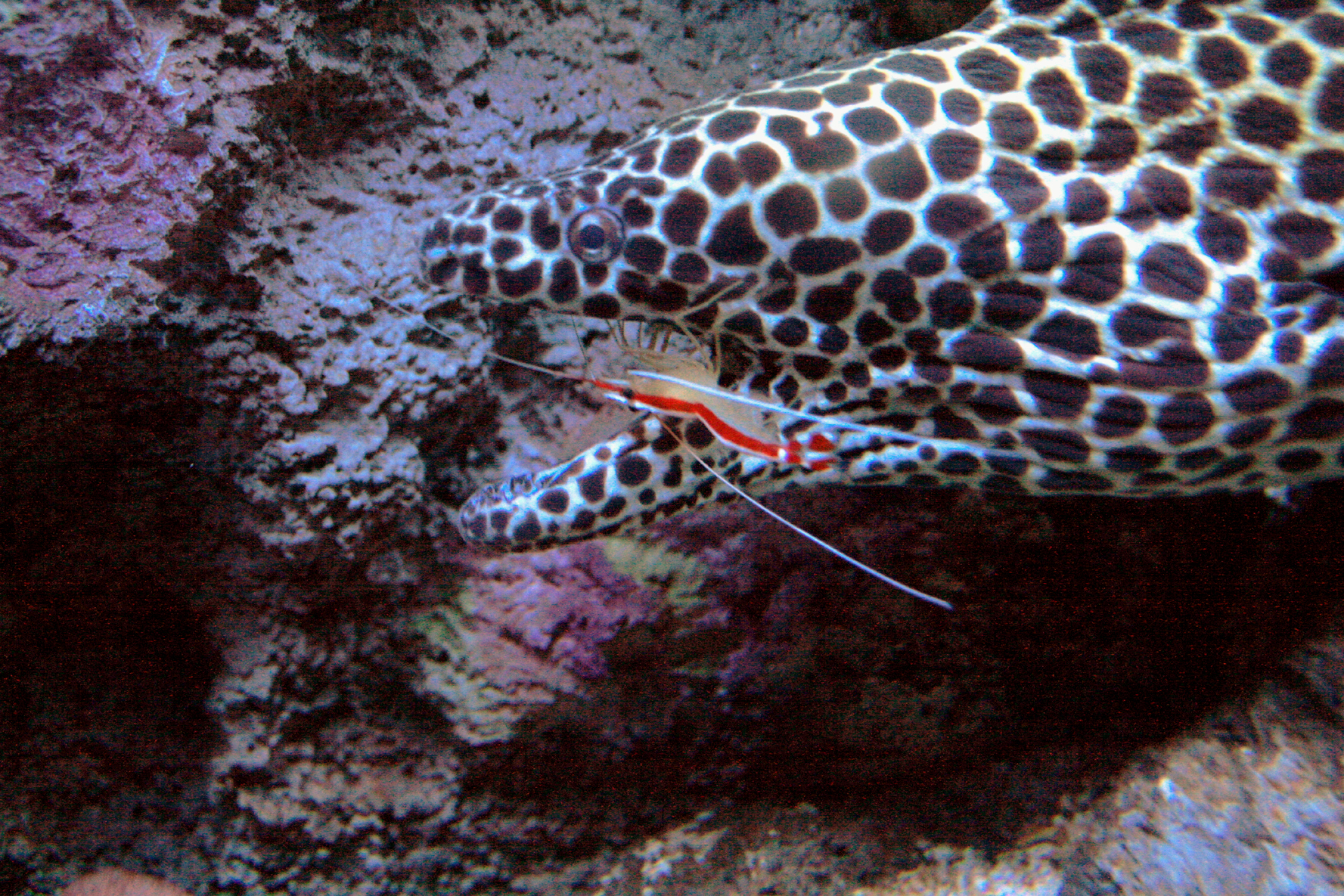Cleaner shrimp on:
[Wikipedia]
[Google]
[Amazon]


 Cleaner shrimp is a
Cleaner shrimp is a

 Cleaner shrimp is a
Cleaner shrimp is a common name
In biology, a common name of a taxon or organism (also known as a vernacular name, English name, colloquial name, country name, popular name, or farmer's name) is a name that is based on the normal language of everyday life; and is often con ...
for a number of swimming decapod
The Decapoda or decapods, from Ancient Greek δεκάς (''dekás''), meaning "ten", and πούς (''poús''), meaning "foot", is a large order of crustaceans within the class Malacostraca, and includes crabs, lobsters, crayfish, shrimp, and p ...
crustacean
Crustaceans (from Latin meaning: "those with shells" or "crusted ones") are invertebrate animals that constitute one group of arthropods that are traditionally a part of the subphylum Crustacea (), a large, diverse group of mainly aquatic arthrop ...
s that clean other organisms of parasite
Parasitism is a Symbiosis, close relationship between species, where one organism, the parasite, lives (at least some of the time) on or inside another organism, the Host (biology), host, causing it some harm, and is Adaptation, adapted str ...
s. Most are found in the families
Family (from ) is a group of people related either by consanguinity (by recognized birth) or affinity (by marriage or other relationship). It forms the basis for social order. Ideally, families offer predictability, structure, and safety as ...
Hippolytidae (including the Pacific cleaner shrimp, ''Lysmata amboinensis'') and Palaemonidae
Palaemonidae is a family of shrimp in the order Decapoda. Many species are carnivores that eat small invertebrates, and can be found in any aquatic habitat except the deep sea. One significant genus is '' Macrobrachium'', which contains commerci ...
(including the spotted '' Periclimenes magnificus''), though the families Alpheidae
Alpheidae (also known as the snapping shrimp, pistol shrimp or alpheid shrimp) is a family (biology), family within the shrimp infraorder Caridea characterized by having asymmetrical claws, the larger of which is typically capable of producing a ...
, Pandalidae, and Stenopodidae (including the banded coral shrimp, ''Stenopus hispidus'') each contain at least one species of cleaner shrimp. The term "cleaner shrimp" is sometimes used more specifically for the family Hippolytidae and the genus '' Lysmata''.
Cleaner shrimp are so called because they exhibit a cleaning symbiosis
Cleaning is the process of removing unwanted substances, such as dirt, infectious agents, and other impurities, from an object or environment. Cleaning is often performed for beauty, aesthetic, hygiene, hygienic, Function (engineering), function ...
with client fish where the shrimp clean parasites from the fish. The fish benefit by having parasites removed from them, and the shrimp gain the nutritional value of the parasites. The shrimp also eat the mucus and parasites around the wounds of injured fish, which reduces infections and helps healing. The action of cleansing further aids the health of client fish by reducing their stress levels. In many coral reef
A coral reef is an underwater ecosystem characterized by reef-building corals. Reefs are formed of colonies of coral polyps held together by calcium carbonate. Most coral reefs are built from stony corals, whose polyps cluster in group ...
s, cleaner shrimp congregate at cleaning stations. In this behaviour cleaner shrimps are similar to cleaner fish, and sometimes may join with cleaner wrasse and other cleaner fish attending to client fish.
Shrimp of the genus '' Urocaridella'' are often cryptic or live in caves
Caves or caverns are natural voids under the Earth's surface. Caves often form by the weathering of rock and often extend deep underground. Exogene caves are smaller openings that extend a relatively short distance underground (such as rock ...
on the reef and are not associated commensally with other animals. These shrimp assemble around cleaning stations where up to 25 shrimp live in proximity. When a potential client fish swims close to a station with shrimp present, several shrimp perform a "rocking dance," a side-to-side movement. Frequency of rocking increases with hunger. This increase in frequency suggests competition
Competition is a rivalry where two or more parties strive for a common goal which cannot be shared: where one's gain is the other's loss (an example of which is a zero-sum game). Competition can arise between entities such as organisms, indi ...
between hungry and sated shrimp. To avoid competition
Competition is a rivalry where two or more parties strive for a common goal which cannot be shared: where one's gain is the other's loss (an example of which is a zero-sum game). Competition can arise between entities such as organisms, indi ...
with other cleaners during the day, the shrimp '' Urocaridella antonbruunii'' was observed cleaning a sleeping fish at night.
Cleaner shrimps are often included in saltwater aquaria partly due to their cleansing function and partly due to their brightly colored appearance.
References
{{reflist Decapods Symbiosis